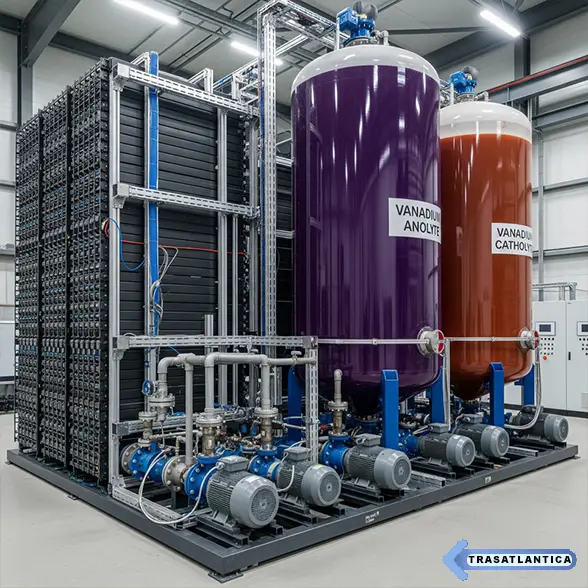Flow Batteries serve as a promising solution for large scale energy storage, offering flexibility and scalability beyond conventional batteries. Their unique design separates energy storage capacity from power output, enabling customization for diverse applications. This technology addresses critical challenges in managing renewable energy fluctuations and supports grid reliability. As energy demands grow, flow batteries increasingly attract attention for utility-scale deployments and long-duration storage projects.
Flow Batteries Enabling Grid Flexibility and Stability
The design of flow batteries allows independent scaling of power and capacity, which is vital for adapting to varying energy needs. Electrolyte solutions stored in external tanks undergo redox reactions to store or release energy. This configuration reduces degradation and extends system life compared to traditional batteries. Moreover, flow batteries provide rapid response times suitable for frequency regulation and load balancing. Their safety profile benefits from non-flammable electrolytes, making them suitable for large installations. Utility companies consider these systems valuable assets for integrating variable renewable sources such as solar and wind.
Technological Advances Accelerating Flow Batteries Adoption
Recent innovations focus on improving electrolyte chemistry and system components to boost efficiency and reduce costs. Researchers develop new organic and metal-based electrolytes with enhanced stability and lower environmental impact. Additionally, modular designs facilitate easier maintenance and scalability, which benefit both large and smaller projects. Intelligent control systems optimize charge-discharge cycles and monitor performance in real time. Collaborative efforts among academia, industry, and government agencies accelerate technology maturation and commercialization. These advancements position flow batteries as competitive alternatives in the evolving energy storage market.
Economic and Environmental Implications of Flow Batteries
From a financial perspective, flow batteries offer attractive lifecycle costs due to long service durations and reduced material degradation. While initial investment may be higher than other storage types, operational savings and flexible capacity justify the expenditure. Environmentally, these systems minimize resource depletion and toxic waste by using recyclable and abundant materials. Their potential to reduce carbon footprints aligns with global decarbonization goals. Furthermore, flow batteries can support energy access in remote or underserved areas by stabilizing microgrids and renewable installations.
Strategic Outlook on Flow Batteries in Energy Transition
The strategic deployment of flow batteries complements other storage technologies, forming hybrid systems that optimize energy management. Policymakers increasingly include these batteries in clean energy plans, providing incentives and regulatory frameworks to foster growth. Market trends reveal rising interest from utilities and private investors aiming to enhance grid resilience and sustainability. Future developments may see improved energy densities and integration with hydrogen and other renewable fuels. Overall, flow batteries are poised to play a vital role in shaping a reliable and green energy future.
In conclusion, flow batteries offer scalable, safe, and efficient solutions for large scale energy storage challenges. Ongoing technological progress and favorable economic conditions support their expanding role in modern power systems. As the energy landscape evolves, these batteries remain key enablers of renewable integration and grid modernization.
